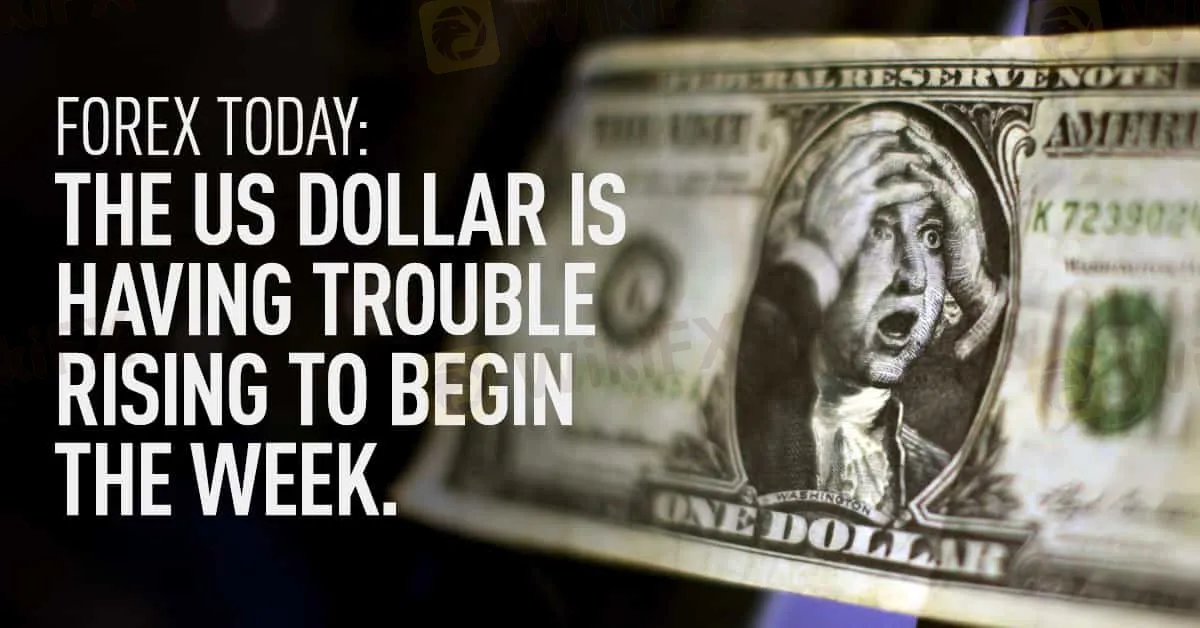简体中文
繁體中文
English
Pусский
日本語
ภาษาไทย
Tiếng Việt
Bahasa Indonesia
Español
हिन्दी
Filippiiniläinen
Français
Deutsch
Português
Türkçe
한국어
العربية
FOREX TODAY: THE US DOLLAR IS HAVING TROUBLE RISING TO BEGIN THE WEEK
Abstract:The US Dollar early on Monday following a week in which it lost significantly to its main competitors. After dropping more than 1% last week, the USD Index is now below 103.00, while the yield on the benchmark 10-year US Treasury above 4%. There won't be any significant data releases to begin the week according to the economic calendar.

WHAT YOU NEED KNOW ON MONDAY, MARCH 11 IS AS FOLLOWS:
The US Dollar early on Monday following a week in which it lost significantly to its main competitors. After dropping more than 1% last week, the USD Index is now below 103.00, while the yield on the benchmark 10-year US Treasury above 4%. There won't be any significant data releases to begin the week according to the economic calendar.
Friday saw a report from the US Bureau of Labor Statistics (BLS) stating that nonfarm payrolls (NFP) increased by 275,000 in February. Although the market had expected a reading of 200,000, it had revised the January gain of 353,000 lower to 229,000, thus the USD did not benefit from this reading. Further analysis of the jobs report showed that, although the percentage of labor force participation stayed at 62.5%, the rate of unemployment rose from 3.7% to 3.9% and the annual wage inflation fell to 4.3%.
THE VALUE OF THE US DOLLAR AT THE MOMENT
The table below shows the percentage change in US dollars (USD) relative to a list of major currencies. In this transaction, the US dollar performed better than the Japanese yen.
| USD | EUR | GBP | CAD | AUD | JPY | NZD | CHF | |
| USD | -0.02% | -0.01% | -0.03% | 0.11% | 0.14% | 0.01% | -0.08% | |
| EUR | 0.02% | 0.00% | -0.02% | 0.13% | 0.17% | 0.03% | -0.06% | |
| GBP | 0.01% | -0.02% | -0.02% | 0.15% | 0.15% | 0.05% | -0.06% | |
| CAD | 0.02% | 0.00% | 0.02% | 0.16% | 0.15% | 0.06% | -0.05% | |
| AUD | -0.15% | -0.13% | -0.17% | -0.17% | 0.03% | -0.09% | -0.18% | |
| JPY | -0.14% | -0.16% | 0.11% | -0.17% | -0.04% | -0.11% | -0.22% | |
| NZD | -0.01% | -0.03% | -0.02% | -0.05% | 0.09% | 0.13% | -0.09% | |
| CHF | 0.06% | 0.04% | 0.05% | 0.04% | 0.17% | 0.20% | 0.11% |
The major currencies' percentage movements relative to one another are displayed on the heat map. The quotation currency is selected from the top row, and the base currency is selected from the left column. For example, the percentage change shown in the box will indicate EUR (base)/JPY (quote) if you select the Euro from the left column and proceed along the horizontal line to the Japanese Yen.
The Consumer Price Index (CPI), which measures annual inflation, increased to 0.7% in February from -0.8% in January, according to data from China released over the weekend of 0.3%. The weekly start saw AUD/USD pair was last seen maintaining the gains at roughly 0.6600.
The USD/JPY fell by almost 2% last week, and on Friday it fell below 147.00 for the first time in more than a month. The two maintain their composure just below 147.00 on Monday morning in Europe. Japan's Gross Domestic Product shrank by 0.4% in the preceding quarter before growing by 0.4% annually in the fourth quarter.
After the US data on Friday, the EUR/USD reached its highest level in almost two months at 1.0981, but profit-taking erased its daily gains. The pair moves in a narrow channel in the early European session, just below 1.0950.
A fresh record high of $2,195 was hit by gold on Friday during American market hours, continuing its remarkable ascent. XAU/USD fluctuates in a small range in the European morning at about $2,180.

Disclaimer:
The views in this article only represent the author's personal views, and do not constitute investment advice on this platform. This platform does not guarantee the accuracy, completeness and timeliness of the information in the article, and will not be liable for any loss caused by the use of or reliance on the information in the article.
Read more

The One Fear That’s Costing You More Than Just Profits
The fear of missing out (FOMO) is NOT what you think it is! Read the three lesser-discussed components that contribute greatly to FOMO trading!

RM457,000 Forex Fraud: Court Grants Conditional Release, Is Justice Delayed?
A Malaysian magistrate’s court has issued a discharge not amounting to acquittal (DNAA) for two former directors of an investment company implicated in a forex investment fraud case involving RM457,735.50.

Gold Surges to New Highs – Is It Time to Buy?
Recently, gold prices have once again set new records, surpassing $3,077 per ounce and continuing a four-week winning streak. Is It the Right Time to Invest?

Why Does the Yen's Exchange Rate Fluctuate Repeatedly?
JPY Exchange Rate Fluctuations: How Should Investors Respond?
WikiFX Broker
Latest News
Why Are Financial Firms Adopting Stablecoins to Enhance Services and Stability?
Experienced Forex Traders Usually Do This Before Making a Lot of Money
Octa vs XM:Face-Off: A Detailed Comparison
When High Returns Go Wrong: How a Finance Manager Lost RM364,000
Bridging Trust, Exploring Best—WikiEXPO Hong Kong 2025 Wraps Up Spectacularly
Interactive Brokers Expands Crypto Trading with Solana, XRP, Cardano, and Dogecoin
Fidelity Investments Explores Stablecoin Innovation in Digital Assets Sector
Why More People Are Trading Online Today?
SEC Ends Crypto.com Probe, No Action Taken by Regulator
Broker Comparison: FXTM vs XM
Currency Calculator







